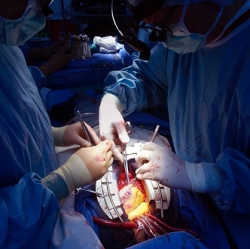
Researchers have developed a new tissue scaffold (support structure) technology that could one day make it possible to engineer large organs. Currently, tissue engineering has been limited to growing small pieces of tissue, because larger dimensions reduce the oxygen supply to the cells in the center of the tissue.
The team of researchers synthesized a new class of artificial membrane binding proteins that can be attached to stem cells. By attaching an oxygen-carrying protein, myoglobin, to the stem cells before they are used to engineer cartilage, they ensure that each cell has its own oxygen reservoir that it can access when the oxygen in the scaffold drops to dangerously low levels.
The team’s open-access findings, published June 18 in Nature Communications, could expand the possibilities in tissue engineering, including other tissue such as cardiac muscle or bone.
“Creating larger pieces of cartilage gives us a possible way of repairing some of the worst damage to human joint tissue, such as the debilitating changes seen in hip or knee osteoarthritis or the severe injuries caused by major trauma, for example in road traffic accidents or war injuries,” said Hollander.
Hollander’s pioneering work includes the development of a method of creating cartilage cells from stem cells, which helped to make possible the first successful transplant of a tissue-engineered trachea, using the patient’s own stem cells.
